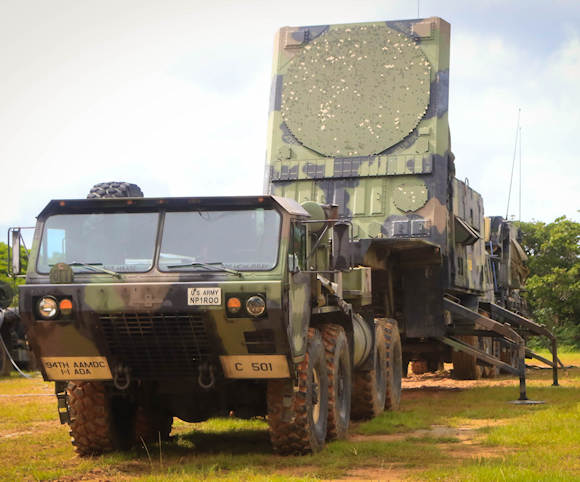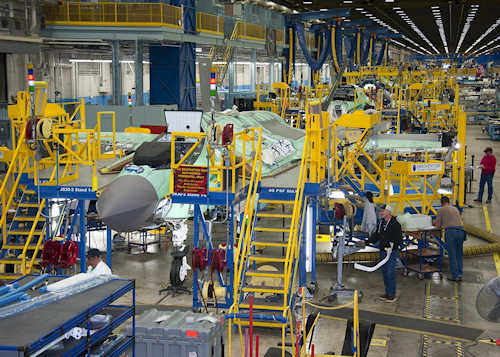Taking up what GB Vico said, history repeats itself, now also in the discovery and use of new materials.
In prehistoric times, the discovery of the metallurgy of copper, bronze and iron brought great changes to humanity, with the emergence of new powers and the end of pre-existing structures and powers.
During the metal age, the shortage of bronze between 1800 and 1700 BC led to various conflicts in the Mediterranean focused on the control of this metal, to turn it into weapons. Subsequently, using what is now known as "replacement technology", it was possible to produce higher quality weapons from a much more abundant metal, but through a more complicated metallurgical process. The metal was iron. Its use spread and the Iron Age began, with great consequences on existing state structures and those have since become established.
Rare earths today are the cornerstone of our technological evolution. Today, rare earth metals are needed for the production of most products high-tech. Without them, many of the sectors in more developed countries, such as energy, telecommunications, medicine and defense, would collapse. On the other hand, the quantitative scarcity of rare earths, and the difficulties of various kinds and in their access, are not new elements. Shortages have already been predicted for 2025 by the European Commission, limiting the technological growth of Europe and the United States and favoring that of China, with a strong impact on the struggle for global hegemony and international security.
Rare earths were first discovered by a Swedish army officer in 1787, but they did not generate the current fibrillations and their use was initially limited. Up to 1947 17 rare metals were found and their importance increased with research in atomic physics, quantum physics and chemistry.
 Today it would be impossible to imagine everyday life without rare earths, being used in medical technology as contrast agents, radar devices, plasma screens, LEDs, special paints or lasers, to name a few.
Today it would be impossible to imagine everyday life without rare earths, being used in medical technology as contrast agents, radar devices, plasma screens, LEDs, special paints or lasers, to name a few.
Especially their use in electric motors such as magnets or in batteries or fuel cells make them a key resource for the energy transition, which has become a global necessity. The properties of some rare earth elements would make it possible to reduce the size of electric motors, increase the strength of the magnets and allow the use of lighter but more resistant alloys used. The technological application of rare earths in most technological processes has triggered its demand, (apparently and so far) without end.
The concentration in which these elements are found in minerals is very low, hence its name "rare", actually they are not rare in the world, but their low proportion gives rise to the name. Deposits of rare earths are abundant all over the world, however, the economic profitability of their exploitation depends on the concentration in which they are found in these deposits. China owns a third of the world's reserves, followed by Brazil, Vietnam and Russia. However, the extraction and separation of rare earths represents a technological and logistical challenge, associated with severe environmental pollution.
The industrial relevance of rare earths is not (yet) equivalent to other commodities such as oil or gas. However, many industrial sectors that would be affected by an interruption in the supply of rare earths are directly or indirectly linked to human safety and / or national security. The main reason is the link between rare earths and technology. Today technology dominates the industrial fabric and its development is inconceivable without the use of rare earths. For example, in the defense sector, rare earths enable the development of more effective, agile and intelligent military capabilities and combat systems. Rare earths are now essential for night vision devices, precision guided weapons systems, communications equipment, navigation systems, batteries, technology stealth, drones, target design lasers and communications satellites. They are also used in high performance alloys and super alloys in both armored vehicles and projectiles to give them hardness.
 Any disruption in the rare earth supply chain would have a serious impact on the defense capabilities of any country with technologically advanced armed forces.
Any disruption in the rare earth supply chain would have a serious impact on the defense capabilities of any country with technologically advanced armed forces.
The importance of rare earths becomes strategic and becomes particularly relevant when it is observed that, while the Organization of Petroleum Exporting Countries (OPEC) controls 41% of oil production, it is spread even if unequally among 13 states, China controls about 75% of rare earth production alone. The consequence is a direct influence on the strategic choices of many nations. For example, during the year 2020, there was a threat of direct action by the Chinese government against two major US weapon system manufacturers, but this ultimately did not materialize; however, it could be inferred that any nation that could even indirectly pose a threat to China's security could be sanctioned with limitations or interruptions in the supply of rare earths. And seeing China's growing determination on the international stage, this is not just an academic hypothesis. Therefore, it becomes a strategic priority to have a secure supply chain for these critical minerals.
The only country in the world with a complete, independent and autonomous supply chain is China. The difference of interests between the value chain (economic interest) and the supply chain (strategic interest) means that each economic and socio-political model has a different perspective on the supply of rare earths and the associated value chain. The more liberalist perspective, like that of the United States, is based on the "efficient market", leaving self-regulation in the hands of private corporations, to generate an adequate value chain that should (ideally) have an associated supply chain, in this case of rare earths. From the strategic socio-economic point of view of Beijing, on the other hand, the State / Party intervenes directly in its companies and the private ones are kept under very strict control and even more those that operate in sectors considered strategic.
 Beijing primarily pursues national security goals, protecting the supply chain, and subsequently, seeks to maximize value chain profits.
Beijing primarily pursues national security goals, protecting the supply chain, and subsequently, seeks to maximize value chain profits.
Even with 40% of rare earth reserves currently in China, Beijing is also the world's largest importer. Thanks to these imports and the use of own resources, the final production of rare earths in China amounts to about 140.000 tons, about 75% of world production. This figure already shows China's dominance in the rare earth chain, followed by Australia (11%) and the United States (8%).
La Belt Road Initiative (BRI), a pillar of China's golbal policy, also serves for the supply, trade and transport of rare earths and their associated products, both for import and export, supporting its near monopoly throughout the world.
Today there are only two companies outside of China that can be considered global producers of rare earths, one from Australia (Lynas Corporation) and one from the United States (MP Materials).
However, MP Materials ships its rare earth concentrates to China for processing, and the Chinese government has a 10% stake in the same company. China, in turn, sells manufactured and finished products at a large profit margin. The buyer countries thus maintain a relationship of dependence on China; making political decisions without taking into account the entire supply chain or without knowing the relationship between each of its processes can lead to financing and increasing the Chinese monopoly on rare earths.
 The trade war between the United States and China is not limited to the economic sphere and is associated with the pursuit and maintenance of technological superiority and the control of supply routes.
The trade war between the United States and China is not limited to the economic sphere and is associated with the pursuit and maintenance of technological superiority and the control of supply routes.
Technology not only represents growing value for the economy, it also has a direct impact on the daily lives of citizens and, historically, technology has played a decisive role in the quest for international power, as well as the control of supply routes. it enables the security of supply chains, which have expanded and diversified with the advance of globalization.
Without an adequate supply of rare earths, today it would not be possible to maintain not only the technological advantage, but also the normal functioning of the various sectors of the economy.
Some of the technologies currently under development may be disruptive in their own right, for example: artificial intelligence (AI), quantum computing, robotics, biotechnology and nanotechnology.
These technologies will not only change daily life, but may also alter the current international hierarchy. China has already made public its plan to achieve independence in 10 key technologies by 2025. Currently, as regards the supply of materials, the physical basis of these technologies, independence is already ensured.
China is constantly moving towards strategic autonomy. On the contrary, since Beijing has a quasi-monopoly on rare earths, the maintenance of US technological hegemony depends precisely on China.
 The Biden Administration has full awareness of the problem and has ordered a day supply chain review in key areas of medicine, commodities and agriculture. The result of the request was severe: "decades of under-investment, coupled with public policy choices that favor short-term solutions, have left the system fragile". The Departments of Defense, Agriculture, Energy, Interior, the White House Office of Science and Technology Policy, the Environmental Protection Agency (EPA) are trying to address the supply chain problem for rare earths and other critical materials. So far, the major effects of these policies have been reflected in the attempt to recover the supply chain on American soil with reopening of mines, activation of processing centers, agreements with commercial companies and securing the supply chain, all by 2025. .
The Biden Administration has full awareness of the problem and has ordered a day supply chain review in key areas of medicine, commodities and agriculture. The result of the request was severe: "decades of under-investment, coupled with public policy choices that favor short-term solutions, have left the system fragile". The Departments of Defense, Agriculture, Energy, Interior, the White House Office of Science and Technology Policy, the Environmental Protection Agency (EPA) are trying to address the supply chain problem for rare earths and other critical materials. So far, the major effects of these policies have been reflected in the attempt to recover the supply chain on American soil with reopening of mines, activation of processing centers, agreements with commercial companies and securing the supply chain, all by 2025. .
Despite the trade war between China and the United States, with the exchange of sanctions and duties, Washington has always kept rare earths out of duties, also due to the risk that China could still use them as a deterrent weapon.
A first argument could lead one to think that China should have no interest in imposing export quotas, as this would damage it economically, triggering a new escalation in the mutual imposition of economic or tariff sanctions.
In general terms, however, China's economic dependence on the United States has been steadily declining in recent years and continues to build architectures that work to its advantage. It should be noted that, at the end of 2020, the largest free trade agreement in the world was signed, the RCEP (Regional Comprehensive Economic Partnership), promoted by China and in which all ASEAN nations (minus Timor-Leste) participate, Japan, South Korea, Australia and New Zealand. The RCEP, operational since the beginning of this year, which represents 30% of world trade, has also seen the UK apply to join this treaty.
 As mentioned above, the EU and the US have already officially predicted a shortage of rare earths by 2025. But this is, in addition to an instrument of pressure from Beijing to condition the international community, also a problem for China due to the sharp increase of domestic demand for the consumption of products that use rare earths. Chinese development in recent decades has led to the emergence and growth of a huge middle class (equivalent to the entire European population) which, despite some slowdowns, continues to grow in number and economic capacity. This middle class now has access to previously unavailable technologies and goods, but their limitation could have a negative impact on internal governance, with risks related to public order.
As mentioned above, the EU and the US have already officially predicted a shortage of rare earths by 2025. But this is, in addition to an instrument of pressure from Beijing to condition the international community, also a problem for China due to the sharp increase of domestic demand for the consumption of products that use rare earths. Chinese development in recent decades has led to the emergence and growth of a huge middle class (equivalent to the entire European population) which, despite some slowdowns, continues to grow in number and economic capacity. This middle class now has access to previously unavailable technologies and goods, but their limitation could have a negative impact on internal governance, with risks related to public order.
By way of example, China's demand for rare earths over the past five years has exceeded its own production and the priority of the Chinese government will probably be alongside that of guaranteeing domestic consumption in the first place, also that of continuing to provide regularity of their supply for strategic sectors such as defense, medicine and energy.
The outcome of this struggle for world hegemony can be determined by the pace, that is, by the reaction speed of the United States and its allied states, or by China, which will take advantage of this clear geostrategic advantage as long as it can maintain it.
Beyond the security impact of the Western world from the scarcity of rare earths, this situation would also allow China to obtain an advantageous negotiating position on international security, which the United States may not be willing to accept and in this follow-up. from the EU.
 China's rare earth monopoly serves, on the one hand, to strengthen its technological transformation and continue its economic progress associated with its struggle for hegemony. At the same time, for the US and the EU, China's dependence on the supply of rare earths poses a serious threat to its strategic autonomy, a potential threat to its security and a possible brake on its economy and technological development.
China's rare earth monopoly serves, on the one hand, to strengthen its technological transformation and continue its economic progress associated with its struggle for hegemony. At the same time, for the US and the EU, China's dependence on the supply of rare earths poses a serious threat to its strategic autonomy, a potential threat to its security and a possible brake on its economy and technological development.
With this monopoly, China has a weapon not only economic and diplomatic but also military, because by interrupting the supply of rare earths it could block the production of the overall and defense capabilities of its competitors.
The US strategy dedicated to rare earths moves to promote replacement technology, the exploitation of new fields and the development of new metallurgical centers, reducing dependence on China.
The European one is less defined, but also due to the repercussions of the Ukrainian crisis and the alarm bells on energy policies and the strategic weakness of the Union, it is reasonable to think that Brussels is also developing its own initiative, probably coordinated with Washington.
In the short term, increasing rare earth metal reserves through further mining exploration, increasing efficient recycling methods and expanding secure supply chains would be the best way to respond to rare earth shortages for the western block.
Photo: Xinhua / US Army / Ministry of National Defense of the People's Republic of China












